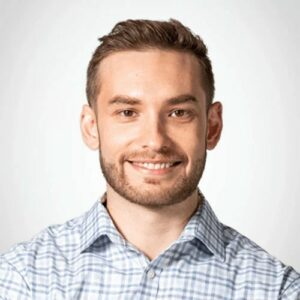Some of the changes companies have been forced to make during the COVID-19 pandemic have been temporary, while others will become permanent. Still, others will be the result of how the pandemic has made company executives and managers think differently about how their businesses are run.
Technology will play a huge role in how, where, and when work gets done. For example, distributed teams consisting of remote workers will likely become much more common, as will software that enables teams to connect and collaborate effectively. Automation will be employed to discourage person-to-person contact. And companies will use new systems to monitor worker health.
Companies will likely turn to nearshore development of software from companies like BairesDev when they need bespoke applications for the functions listed below as well as many others.
Distributed Teams
Many companies have found the same work that’s done in the office can often just as easily be done from a home office or any location with secure internet access. Videoconferencing, collaboration, scheduling, customer care, and other types of software applications contribute to the success of distributed teams.
Another critical component for successful work from home (WFH) arrangements is a stable internet service. According to a recent Forbes article, “Internet in homes will improve, drastically and quickly…. As new homes are built or existing ones remodeled, WFH considerations will be the top priority for many.”
Yet, at least some employees will continue to return to office environments. Technology will play a role here, too, in “[managing] which employees can come to the office, when they can enter and take their places, how often the office is cleaned, whether the airflow is sufficient, and if they are remaining sufficiently far apart as they move through the space,” according to a recent McKinsey article.
The following video describes how WFH may become a permanent arrangement for some companies and employees:
Team Management
These distributed teams still need ways to connect. Creating a foundation of trust and shared goals isn’t easy to do remotely, but it’s not impossible. Sometimes the best way for distributed team managers to telegraph trust is by not using available technology. For example, software that tracks time and workstation breaks is popular for keeping workers on-task. But a results-oriented approach may be more effective than one that bases success on hours spent in front of the computer.
Managers can also suggest helpful tools for team members to use, such as apps that promote productivity, keep them on task for certain periods, and remind them to take appropriate breaks. For example, some apps provide a brief stretching or visualization routine to refresh and avoid sitting for too long.
Reinvented Meetings
Post-pandemic, work schedules are likely to contain fewer meetings. Instead, many topics may be discussed via email and instant messaging. When meetings are scheduled, they will often happen via teleconference. Travel for business meetings is likely to be minimized and large conferences are likely to be greatly reduced in size.
Meetings can even take place asynchronously, meaning that people can participate as their schedule allows. This approach is perfect for global teams or those working flexible schedules to accommodate kids’ remote schooling requirements and other personal obligations.
The New Customer Care
Business is based on trust, but it’s hard to build that trust when company representatives can’t meet customers face-to-face. Videoconferencing may not be a good substitute, but it’s the best solution during this time of social distancing. And, given the potential reduction in costs versus travel for in-person meetings, it may remain a viable alternative even when social distancing is no longer necessary.
The same is true for WFH solutions for customer care agents. With the right technology, agents can provide excellent service as long as they have a stable internet connection. Such solutions enable them to offer all the same services they would when working in a call center, including troubleshooting, returns, exchanges, and complaints.
More Automation
A recent CNBC article states, “Because of social distancing measures, many organizations — from restaurants to retailers — have been forced to find ways to operate with as few employees physically present as possible.” As companies find less expensive ways of meeting customer needs, that trend may well continue beyond the current pandemic.
Even classically human functions, such as HR, may do well with automated components. Artificial intelligence (AI) can help with recruiting and onboarding. It can “write job descriptions…match candidates to jobs, allow candidates to schedule their own interviews, prepare offer letters and aid in the training process,” according to a recent Holland & Knight article.
Increased Safety
An eventual COVID-19 vaccine is likely to be introduced to the public in phases. In the meantime, many companies will want to test people gathering together at central workplaces to ensure everyone’s health and safety.
In fact, according to the CNBC article, “To combat the spread of coronavirus among essential workers, some of the biggest employers in the country, including Amazon, Walmart, Home Depot and Starbucks have [already] begun taking the temperatures of their employees before they are allowed to work.”
The technology used to perform such tests includes thermal cameras, which simply record the temperature of each person entering a building or area. Automated face mask detection, people counting solutions, and contactless access control may also be used to ensure workers are staying safe from COVID-19 and other potential pathogens.
New technology in conjunction with specialized apps can enable workers to use their own phones to operate and control items around the office, so shared surfaces are less likely to spread disease.
Beyond Technology
Of course, all these changes can be overwhelming, and companies should take steps to attend to employees’ emotional well-being in addition to their productivity and physical health. The Holland & Knight article offers a few tips for creating a working environment that is supportive and transparent:
- Establish a robust internal-facing COVID-19 webpage.
- Develop a resource for employees to ask questions and get reliable answers.
- Create a safe avenue for employees to report concerns.
- Host regular web-based training sessions and opportunities to engage in workplace socializing to maintain a strong corporate culture.
These steps will enable companies to ride out the challenges of the COVID-19 pandemic and perhaps emerge even stronger on the other side.






